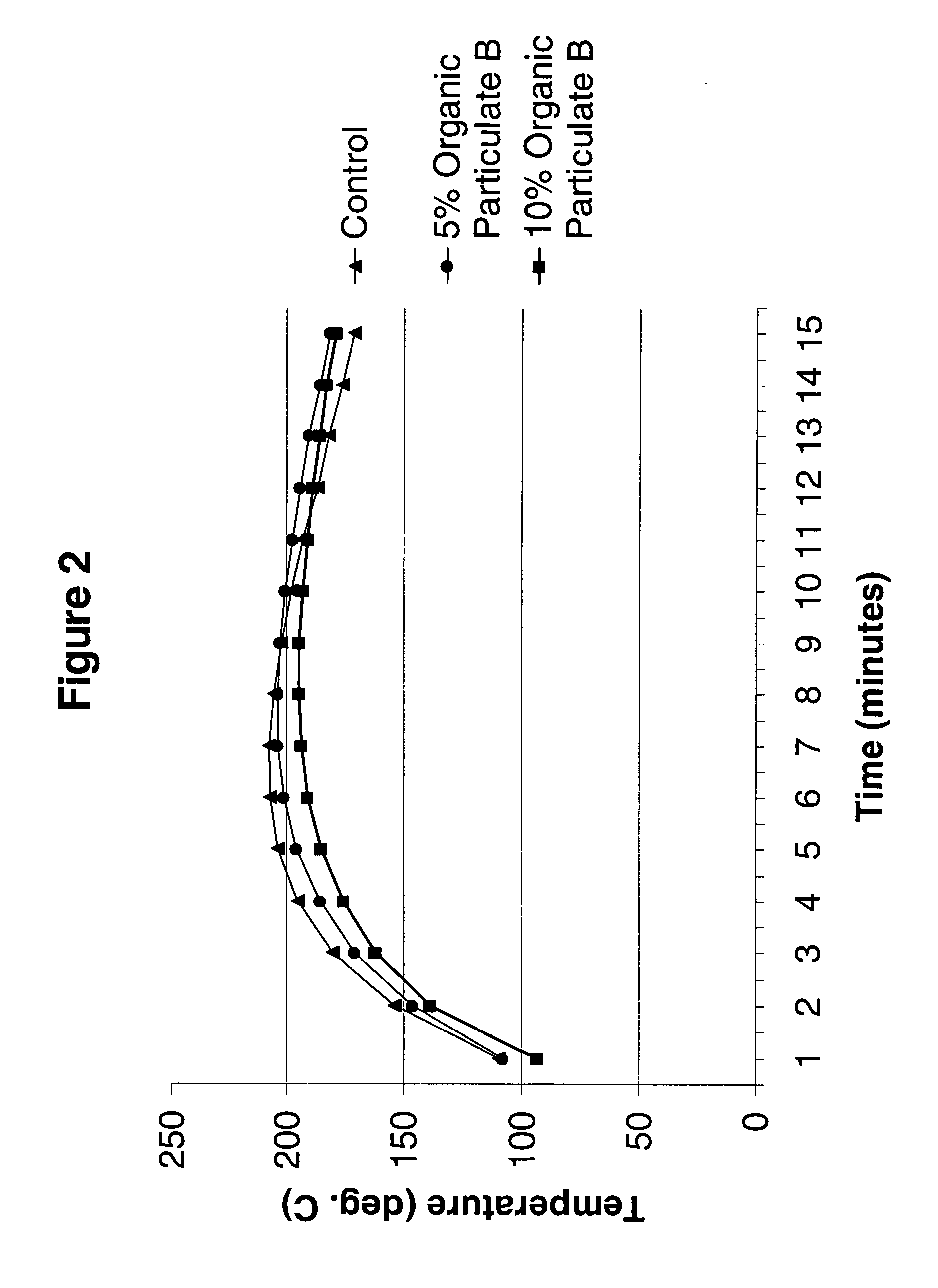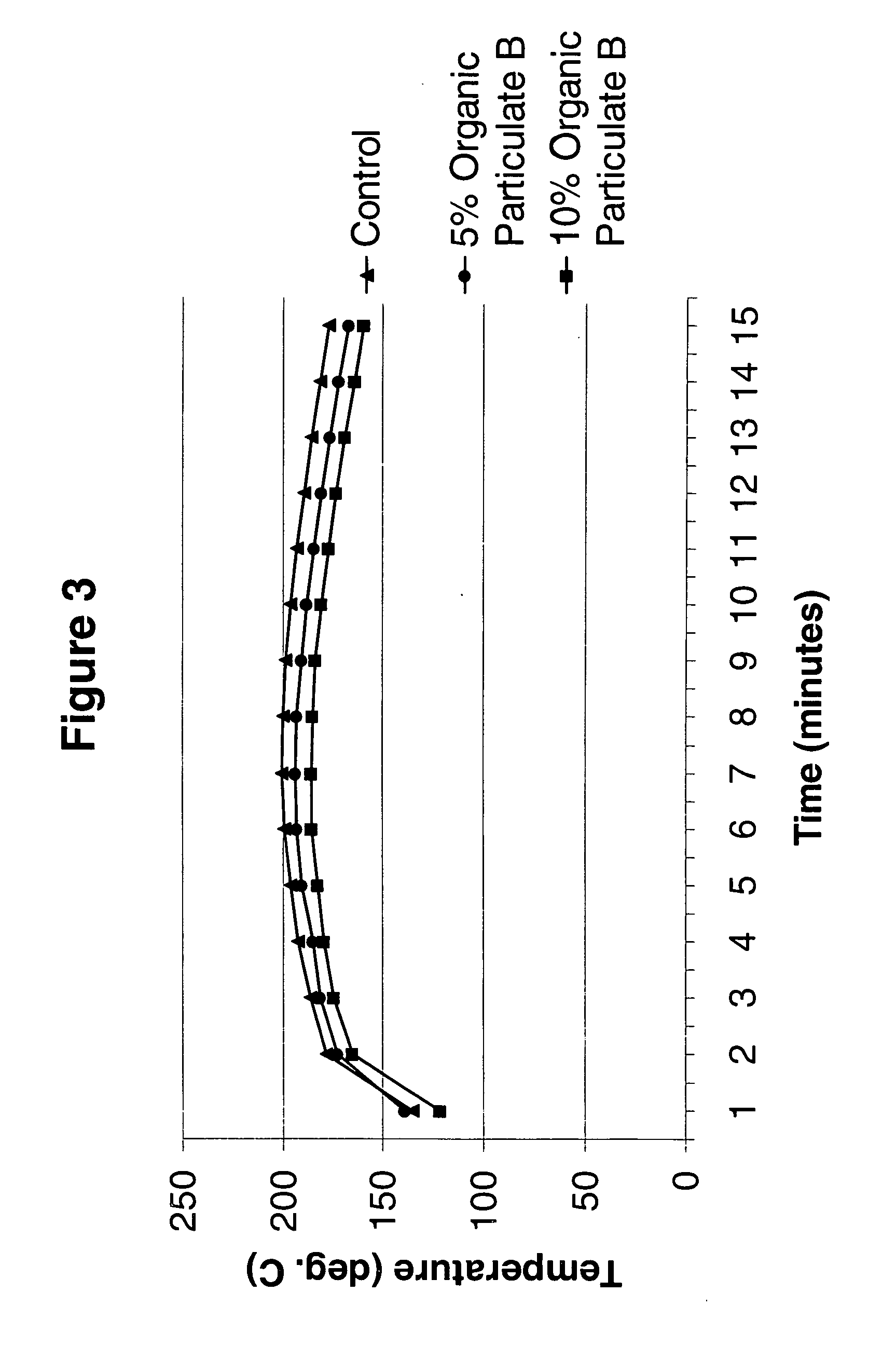Solid polyurethane compositions, infrastucture repair and geo-stabilization processes
a polyurethane and composition technology, applied in the field of polyurethanes, can solve the problems of limiting the use of polyurethane foams by polyurethane foams, the suitability of such materials, and the need for heat expansion of foamable plastic materials, so as to improve the reaction injection molding effect and reduce the concern of heat accrual
- Summary
- Abstract
- Description
- Claims
- Application Information
AI Technical Summary
Benefits of technology
Problems solved by technology
Method used
Image
Examples
examples
[0065] The present invention is further illustrated, but is not to be limited, by the following examples, in which all quantities given in “parts” and “percents” are understood to be by weight, unless otherwise indicated. The following materials were used in preparing the polyurethane foams and solids of the examples: [0066] Polyol A a 43 wt. % solids polymer polyol having a hydroxyl number of about 18.5, in which the solids are a (63.5%) styrene (36%) acrylonitrile mixture polymerized in situ in a base polyol having a hydroxyl number of about 36 prepared by KOH-catalyzed alkoxylation of glycerin with a block of propylene oxide (80 wt. % of the total oxide) followed by a block of ethylene oxide (20 wt. % of the total oxide); [0067] Polyol B a polyether polyol having a molecular weight of 6,000 and a functionality of 3.0; [0068] Polyol C polyether polyols based on ethylene diamine and propylene oxide (630 OH No.);
[0069] Polyol D a propoxylated triol based on glycerine having a hydro...
examples c10 , 11 and 12
Examples C10, 11 and 12
[0104] The non-isocyanate components where mixed in a flask for one min at 25,000 rpm. Filler (if required) was hand mixed until the mixture was homogeneous. The isocyanate was added and mixed 30 second at 20,000 rpm. A portion of the mixture (100 g) was transferred to a small plastic cup and a thermocouple was inserted. The cup was covered with a lid and the core temperature was measured with a Fisher brand thermometer and a stainless steel probe made by Control Company Thermocouple until sample returned to 30° C. A plot of the exotherm is presented in FIG. 4.
TABLE VEx. C10Ex. 11Ex. 12Polyamine38.238.238.2Chain extender56.356.356.3TiO2101010Light stabilizer A0.50.50.5Light stabilizer B0.50.50.5Antioxidant1.01.01.0Adhesion promoter0.50.50.5Filler A0.050.00Filler B0.00.050.0Isocyanate C114114114
[0105]
TABLE VIWt. %Polyol F34.93Polyol G19.96Polyol H4.99Polyol I29.94Drying agent9.98Surfactant0.20Isocyanate D77.5
examples c13 and 14
[0106] Formulations with and without 20 wt. % of organic particulate C were prepared as detailed above in Table VI and reaction injection molded. Photographs of the finished part made without and with the organic particulate are shown in FIGS. 5A and 5B, respectively. The peak exotherm for the formulation without organic particulate (Ex. C13) was observed at 8 minutes, 30 seconds at a temperature of 282° F. The peak exotherm for the formulation with organic particulate (Ex. 14) was observed at 11 minutes at a temperature of 256.8° F.
PUM
| Property | Measurement | Unit |
|---|---|---|
| Particle size | aaaaa | aaaaa |
| Particle size | aaaaa | aaaaa |
| Particle size | aaaaa | aaaaa |
Abstract
Description
Claims
Application Information
 Login to View More
Login to View More - R&D
- Intellectual Property
- Life Sciences
- Materials
- Tech Scout
- Unparalleled Data Quality
- Higher Quality Content
- 60% Fewer Hallucinations
Browse by: Latest US Patents, China's latest patents, Technical Efficacy Thesaurus, Application Domain, Technology Topic, Popular Technical Reports.
© 2025 PatSnap. All rights reserved.Legal|Privacy policy|Modern Slavery Act Transparency Statement|Sitemap|About US| Contact US: help@patsnap.com



